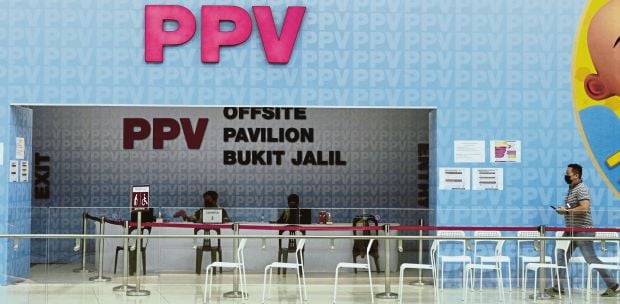At the time of writing, there are 139 million Covid-19 cases and three million deaths, according to Worldometer.
The virus has infected 368,000 people in Malaysia and 516,000 in Japan. Total cases per million people are 11,256 and 4,091, respectively. Fatality numbers are 1,360 in Malaysia and 9,500 in Japan, and total deaths per million people are 42 and 75, respectively.
These show that Malaysia has done and is still doing better in containing the spike than Japan. Is this prima facie evidence beyond a reasonable doubt? Probably not because of differences in the population size, socioeconomic wellbeing and other factors.
Malaysia executed the Movement Control Order (MCO) from March 18 to May 4, 2020, that included restrictions on international inbound and outbound travel. Essential activities were permitted and most businesses later reopened. Mass gatherings were also prohibited.
These, however, did not flatten the curve. Infections spiked again in September 2020 as a result of the Sabah election, and the number of Covid-19 cases has been increasing. On Jan 12, the Yang di-Pertuan Agong declared a national state of emergency until at least Aug 1 to contain the pandemic.
The Malaysian government then launched two emergency stimulus packages — Prihatin (RM250 billion) and Penjana (RM35 billion). The MCO, prohibition on mass gatherings, social distancing and working/studying from home are measures to contain the outbreak. The stimulus packages were crucial to support a V-shaped recovery.
Japan has undertaken three broad approaches, namely border control, announcing stimulus packages and declaring a state of emergency.
Border control delivered favourable results by preventing the entry of infected and asymptomatic persons.
On stimulus packages, two were introduced last year. About RM4.4 trillion (roughly 22 per cent of gross domestic product) was injected on April 7 and April 27, 2020, respectively. The stimulus packages were mostly to support employment and business (especially in providing interest-free loans to small- and medium-sized enterprises), the healthcare system and individual/household consumption. Despite that, Japan's GDP fell 4.8 per cent last year.
Tokyo also declared a state of emergency twice. The first was on April 8 last year, initially covering seven prefectures before it was expanded nationwide on April 18. However, the emergency measure did not prohibit people's movement.
It was lifted on May 25, but the number of cases continued to surge. Inevitably, the second state of emergency was declared in Tokyo and three neighbouring prefectures on Jan 8 this year. It lasted until March 21.
Japan's economy remains sluggish even though nominal GDP expanded 2.3 per cent in the period of October to December last year. As Covid-19 cases continue to surge in recent weeks, the economic outlook in Japan is likely to remain bleak and it is more realistic to say a U-shaped recovery is more likely than a V-shaped recovery.
The persistent spike in cases, especially in Osaka and Tokyo, after the second state of emergency is of serious concern and stricter measures were issued on April 5 and April 12, targeting 10 prefectures.
The approach to suppress Covid-19 in Malaysia and Japan looks relatively similar. Stimulus in each country has played a crucial role in preventing serious recession. However, Malaysia enforced domestic movement restriction; Japan did not.
Both have strong border controls but are still not quite successful in flattening the curve even with preventive measures in place. It is not easy to verify social and individual costs of Covid-19, but cautious optimism is necessary to ensure our resilience in this extreme situation.
Vaccines such as Pfizer-BioNTech, Oxford-AstraZeneca, Sinovac and the like are yet to induce optimism. The emergence of virus variants is like rubbing salt into the wound. For these reasons, the road to herd immunity in both countries is likely to be long and winding.
Having said that, the journey will be less bumpy in Malaysia
if we can learn at least two Japanese habits — regular mouth-rinsing and handwashing.
Japanese are attentive to 3Cs — closed spaces with poor ventilation, crowded places and close-contact settings — when it comes to preventing local clusters of infection. This attentiveness is further encouraged by the media.






